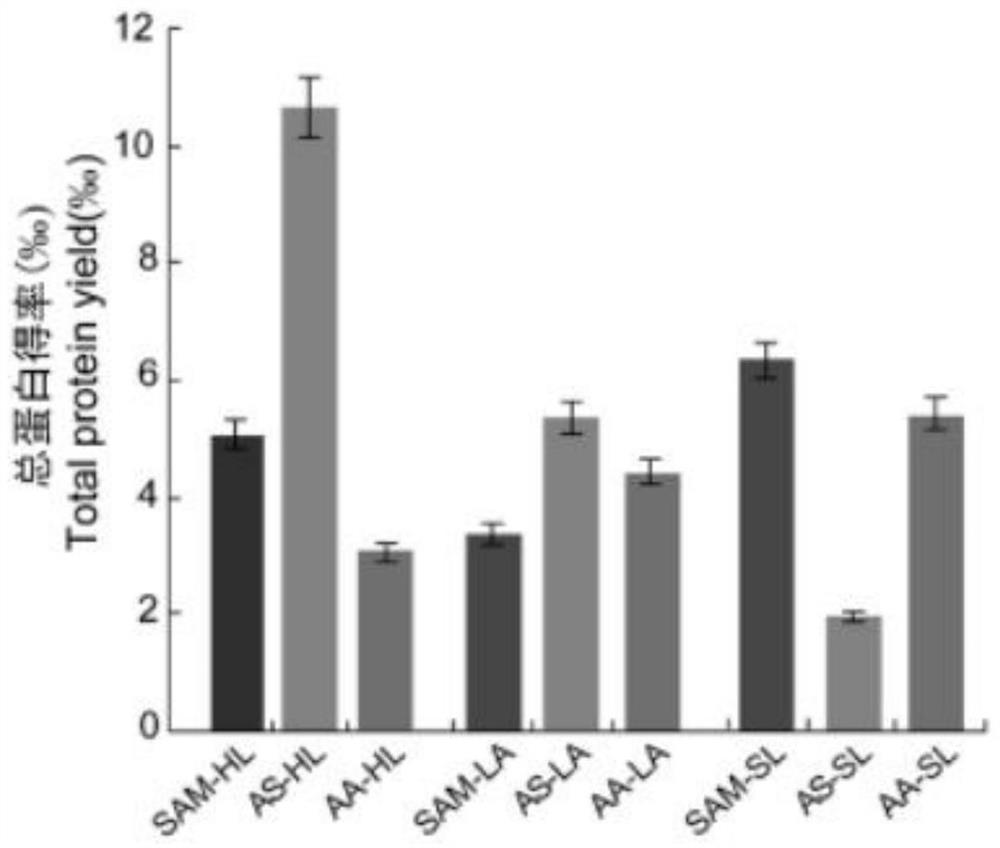Method for extracting proteins from rubber trees and sesuvium portulacastrum plants by phenol extraction method
A plant protein and rubber tree technology, applied in chemical instruments and methods, peptide preparation methods, organic chemistry, etc., can solve problems that affect the separation of proteins by two-dimensional electrophoresis and interfere with mass spectrometry identification.
- Summary
- Abstract
- Description
- Claims
- Application Information
AI Technical Summary
Problems solved by technology
Method used
Image
Examples
Embodiment Construction
[0019] The present invention will be further described below based on the examples, and the modes of the present invention include but are not limited to the following examples.
[0020] like figure 1 As shown, the present invention comprises the following steps:
[0021] A After collecting plant tissue, grind the tissue sample in a liquid nitrogen quick-freezing environment to obtain plant tissue powder;
[0022] B. Add BPP protein extraction buffer to the plant tissue powder and perform mixed centrifugation to obtain the mixed solution and take the supernatant;
[0023] C. Take the supernatant and add a precipitant. After adding the supernatant and the precipitant according to the volume of 1:5, place the supernatant at -20° C. overnight to precipitate to obtain a vegetable protein precipitate.
[0024] D Wash the vegetable protein pellet to extract the protein.
[0025] In the present example, the fresh leaves (Hevea leaves, HL) of the rubber tree (Reyan 73-3-97), the fr...
PUM
 Login to View More
Login to View More Abstract
Description
Claims
Application Information
 Login to View More
Login to View More - R&D
- Intellectual Property
- Life Sciences
- Materials
- Tech Scout
- Unparalleled Data Quality
- Higher Quality Content
- 60% Fewer Hallucinations
Browse by: Latest US Patents, China's latest patents, Technical Efficacy Thesaurus, Application Domain, Technology Topic, Popular Technical Reports.
© 2025 PatSnap. All rights reserved.Legal|Privacy policy|Modern Slavery Act Transparency Statement|Sitemap|About US| Contact US: help@patsnap.com



